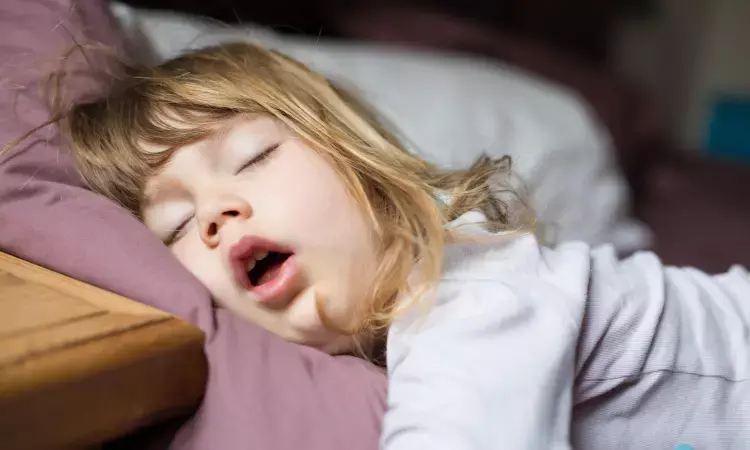- Home
- Medical news & Guidelines
- Anesthesiology
- Cardiology and CTVS
- Critical Care
- Dentistry
- Dermatology
- Diabetes and Endocrinology
- ENT
- Gastroenterology
- Medicine
- Nephrology
- Neurology
- Obstretics-Gynaecology
- Oncology
- Ophthalmology
- Orthopaedics
- Pediatrics-Neonatology
- Psychiatry
- Pulmonology
- Radiology
- Surgery
- Urology
- Laboratory Medicine
- Diet
- Nursing
- Paramedical
- Physiotherapy
- Health news
- Fact Check
- Bone Health Fact Check
- Brain Health Fact Check
- Cancer Related Fact Check
- Child Care Fact Check
- Dental and oral health fact check
- Diabetes and metabolic health fact check
- Diet and Nutrition Fact Check
- Eye and ENT Care Fact Check
- Fitness fact check
- Gut health fact check
- Heart health fact check
- Kidney health fact check
- Medical education fact check
- Men's health fact check
- Respiratory fact check
- Skin and hair care fact check
- Vaccine and Immunization fact check
- Women's health fact check
- AYUSH
- State News
- Andaman and Nicobar Islands
- Andhra Pradesh
- Arunachal Pradesh
- Assam
- Bihar
- Chandigarh
- Chattisgarh
- Dadra and Nagar Haveli
- Daman and Diu
- Delhi
- Goa
- Gujarat
- Haryana
- Himachal Pradesh
- Jammu & Kashmir
- Jharkhand
- Karnataka
- Kerala
- Ladakh
- Lakshadweep
- Madhya Pradesh
- Maharashtra
- Manipur
- Meghalaya
- Mizoram
- Nagaland
- Odisha
- Puducherry
- Punjab
- Rajasthan
- Sikkim
- Tamil Nadu
- Telangana
- Tripura
- Uttar Pradesh
- Uttrakhand
- West Bengal
- Medical Education
- Industry
Adenotonsillectomy in kids for Sleep Apnea may improve bedwetting: JAMA study

Adenotonsillectomy for the treatment of pediatric obstructive sleep apnea (OSA) appears to also result in improvement in bedwetting, according to a study published in JAMA Otolaryngology-Head & Neck Surgery.
Children with obstructive sleep apnea (OSA) are at increased risk for nocturnal enuresis (NE). However, randomized clinical trials assessing nocturnal enuresis (NE) outcomes in children randomized to adenotonsillectomy (AT) vs watchful waiting are lacking.
A group of researchers from Virginia, U.S.A conducted a study to assess the outcomes of adenotonsillectomy (AT) vs watchful waiting in children with non-severe Obstructive Sleep Apnea (OSA) who experience Nocturnal Enuresis (NE).
Secondary analysis of data from a multicenter randomized clinical trial conducted at tertiary children's hospitals was performed. Participants included 453 children aged 5.0 to 9.9 years with nonsevere OSA who were randomized to either watchful waiting or adenotonsillectomy (AT) as part of the multicenter Childhood Adenotonsillectomy Trial. Caregivers completed the Pediatric Sleep Questionnaire, which includes a binary item on bed-wetting, at baseline and 7-month follow-up. The trial was conducted between October 2007 and June 2012. Evaluation in this secondary analysis involving Nocturnal Enuresis (NE) occurred from October 2019 to March 2021.
The results of the study are as follows:
· Of the 453 children enrolled, 393 were included in the analysis; of these, 201 were girls (51.1%). The mean (SD) age at baseline was 6.54 (1.40) years.
· At baseline, the number of children with Nocturnal Enuresis (NE) was similar between the adenotonsillectomy (AT) and watchful-waiting groups.
· The odds of Nocturnal Enuresis (NE) in the watchful-waiting group were approximately 2 times higher than the adenotonsillectomy (AT) group after 7 months
· Following adenotonsillectomy (AT), there was a decrease in the number of children with Nocturnal Enuresis (NE) (n = 38).
· The prevalence of Nocturnal Enuresis (NE) did not change in the watchful-waiting group (n = 66) at follow-up.
· Although Nocturnal Enuresis (NE) was less frequent in girls, other clinical factors, such as age, race and ethnicity, obesity, and apnea-hypopnea index, were not associated with improvement of Nocturnal Enuresis (NE).
Thus, the researchers concluded that in this secondary analysis of a randomized clinical trial, adenotonsillectomy (AT) for the treatment of pediatric Obstructive Sleep Apnea (OSA) appears to result in improvement in Nocturnal Enuresis (NE). Further research is needed to assess whether adenotonsillectomy (AT) is associated with long-term benefits for Nocturnal Enuresis (NE) compared with watchful waiting.
Reference:
Evaluation of Nocturnal Enuresis After Adenotonsillectomy in Children with Obstructive Sleep Apnea: A Secondary Analysis of a Randomized Clinical Trial by Snow A et. al published in the JAMA Otolaryngology-Head & Neck Surgery.
doi:10.1001/jamaoto.2021.2303
Dr. Shravani Dali has completed her BDS from Pravara institute of medical sciences, loni. Following which she extensively worked in the healthcare sector for 2+ years. She has been actively involved in writing blogs in field of health and wellness. Currently she is pursuing her Masters of public health-health administration from Tata institute of social sciences. She can be contacted at editorial@medicaldialogues.in.
Dr Kamal Kant Kohli-MBBS, DTCD- a chest specialist with more than 30 years of practice and a flair for writing clinical articles, Dr Kamal Kant Kohli joined Medical Dialogues as a Chief Editor of Medical News. Besides writing articles, as an editor, he proofreads and verifies all the medical content published on Medical Dialogues including those coming from journals, studies,medical conferences,guidelines etc. Email: drkohli@medicaldialogues.in. Contact no. 011-43720751


